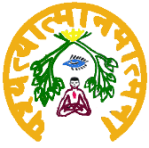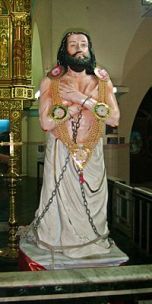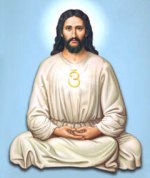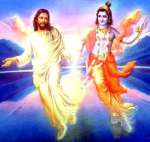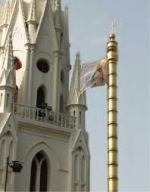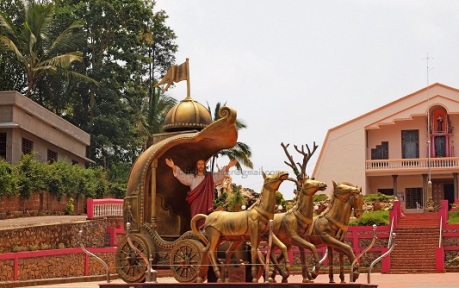 “Starting from the 16th century, Christian aggression slowly spread to many parts of India. The Portuguese, Dutch, French, German and British establishments landed in places such as Goa, Kerala, Tamil Nadu, Bengal and the North-East, etc., in the guise of trade and missions, started encroaching fast and armed invasions followed suit.” – B. R. Haran
“Starting from the 16th century, Christian aggression slowly spread to many parts of India. The Portuguese, Dutch, French, German and British establishments landed in places such as Goa, Kerala, Tamil Nadu, Bengal and the North-East, etc., in the guise of trade and missions, started encroaching fast and armed invasions followed suit.” – B. R. Haran
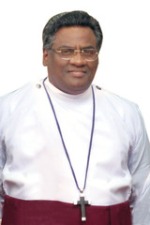 On 17 December 2014, Rev. Govada Dyvasirvadam, Church of South India Moderator has said, “Controversies such as the aborted Aligarh mass conversion deserve criticism and the politics behind it abhorred for it is creating fissures in the nation’s religious harmony. Every Indian is free to embrace the faith which he/she believes in. Most Christians in this nation are a product of group conversions conducted by missionaries who arrived in these shores several centuries earlier. So, we are not against conversion. But instances like Aligarh seem deliberately magnified by political outfits and such things deserve criticism” (1).
On 17 December 2014, Rev. Govada Dyvasirvadam, Church of South India Moderator has said, “Controversies such as the aborted Aligarh mass conversion deserve criticism and the politics behind it abhorred for it is creating fissures in the nation’s religious harmony. Every Indian is free to embrace the faith which he/she believes in. Most Christians in this nation are a product of group conversions conducted by missionaries who arrived in these shores several centuries earlier. So, we are not against conversion. But instances like Aligarh seem deliberately magnified by political outfits and such things deserve criticism” (1).
It seems for Govada Dyvasirvadam, the “Home Coming” ceremonies conducted by Hindu organizations are “controversies” while the mass conversions conducted by Christian evangelical outfits are “voluntary embracing” of faith by those converted. Though he has admitted the fact that the Christians in India are products of mass conversions happened centuries ago, he has conveniently forgotten to admit the other fact that the Christian establishments continue the same strategies conceived and executed by the European missionaries who arrived in Indian shores five centuries earlier.
As the nation has started a debate on Conversions in the aftermath of the ‘Ghar Vapsi’ event in Agra, and since Govada Dyvasirvadam audaciously attempts to criticize the “Ghar Vapsi” programs while deliberately hiding the illegal conversions indulged in by evangelical outfits, it would be in order to take a critical look at Inculturation, an ugly strategy being adopted by the Church, which poses a huge threat to the peace and harmony. In fact, Inculturation happens to be the most potent weapon of the Church to convert Non-Christians.
Sample of Inculturation
Celebrant:
Om Shri Yesu Bhagavate, Namah
Om Shri Deva Putraya Namah
Om Shri Sat Purushaya Namah
Om Shri Yesu Abbishiktaya Namah
Om Shri Sad Guruve Namah
Om Shri Taraneshaya Namah….
Congregation:
Amen. You are the Fullness of Reality, One without a second, Being, Knowledge, Bliss! Om, Tat, Sat!
Prasaad Mantra:
Celebrant: This is the Bread that came down from Heaven; whoever eats this Bread will never die.
This is the cup of immortal nectar; whoever drinks of this cup will live forever.
For the Lord says, “He will have eternal Life, and I will raise him up on the last day.”
Do you believe this?
Cong: Yes, Lord, we believe, for you have the words of eternal Life.
Naamajapa (After taking Communion):
Jesu Om, Jesu Om . . .
Ishwara, Ishwara . . .
Prayers:
OM! The Supreme Lord may protect us all.
The Supreme Lord may diffuse the fruits of knowledge upon us.
May we find the strength to achieve highest knowledge!
This study will conduct us to Truth!
May nobody of us have ever feelings against another.
OM: Shanti! Shanti! Shanti!
These are excerpts taken from a complete prayer conducted during the Order of the Mass for the Monastic Meeting in Petersham, Massachusetts in October 1977. The occasion, convened to lay the foundation for the formation of Monastic Interreligious Dialogue in North America, was sponsored by North AmericanBenedictine and Cistercian Monasteries of Men and Women. Interreligious Dialogue and Inculturation are “Twin Strategies” adopted by the Church to plant the Cross all over and to Christianise non-Christian nations. The ritual shown above is just a sample of this Inculturation technique.
 What is Inculturation?
What is Inculturation?
The Oxford Dictionary defines Inculturation as the gradual acquisition of the characteristics and norms of a culture or group by a person, another culture, etc. Simply put, Inculturation is the adaptation of Christian liturgy to a non-Christian cultural background.
Translation plays a vital role in Inculturation. In his paper presented at the international conference on “Rethinking Translation” at Milwaukee on 10 June 1995, Stephen M. Beall, Ph.D., quotes the declaration made by Pope Paul VI in 1965 that, “vernacular languages had become vox ecclesi, the “voice of the Church” (EDIL 482). Stephen avers that, “On the one hand, the pastors of the Church are committed to the right of Catholics to enjoy their own cultures and to pray in their own language. On the other, they feel an obligation to preserve a certain unity in the way in which all Catholics think and pray. When these values seem to come into conflict, translation becomes a controversial procedure.” Observing that the “key” to the whole matter is “Inculturation”, Stephen defines Inculturation in the words of Aylward Shorter, as, “the creative and dynamic relationship between the Christian message and a culture or cultures”. He also quotes liturgist, FatherAnscar Chupungco that, “the liturgy must think, speak, and ritualize according to the local cultural pattern.” (2) Stephen also says that, “This approach to faith and culture can be traced in part to the documents of the Second Vatican Council, especially Gaudium et Spes.”
The Vatican wanted the Bible to reach the non-Christians in their own language and hence applied this approach. In fact, this approach was adopted by the European Christian missionaries right from the day they landed on Indian soil.
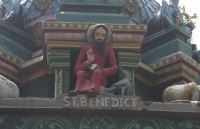 Learn all native things
Learn all native things
Culturally and religiously strong India was a challenge to the European missionaries. Very soon after landing on India, they realized that their evangelical activities would not bear fruits without the help of the native languages. By learning the native languages and getting to know about the native literatures, they could understand the cultural and religious traditions being practiced by the native people. This in turn helped them to devise different strategies for conversion.
Learning of the native languages helped them in two ways. First, they could translate the native literatures into their European languages and sent them to their masters, so that, they could realise the extent of manpower, money power and political power needed to destroy this ancient culture and convert a spiritually strong India. Secondly, they could translate Bible in vernacular languages, which helped them to reach the native people more comfortably.
Starting from the 16th century, Christian aggression slowly spread to many parts of India. The Portuguese, Dutch, French, German and British establishments landed in places such as Goa, Kerala, Tamil Nadu, Bengal and the North-East, etc., in the guise of trade and missions, started encroaching fast and armed invasions followed suit.
 Padres as Brahmins, Munivars and Iyers
Padres as Brahmins, Munivars and Iyers
The man who laid the foundation of inculturation was the Italian priest Robert de Nobili (1577-1656). He learnt Sanskrit and Tamil, wore saffron robes, sacred thread (a small Cross attached to it!) and sandal mark on forehead and called himself a “Roman Brahmin”. He set up an “ashram” in Madurai, became a vegetarian and wore “pathukas” (wooden footwear). He claimed the Bible was the “Lost Veda”, the “Jesuit Veda” revealed by God, and was considerably successful in harvesting souls. Nobili is supposed to have written some 15 books apart from preparing a Portuguese-Tamil Dictionary. He is credited with the insertion of many Biblical terms in Tamil.
Following his footsteps, Italian missionary Constantine Joseph Beschi (1680-1746), called himself Veeramaamunivar (Veer-Maha-Munivar) to pretend he was a great lover of Tamil. Outwardly conducting himself like a Hindu sanyasi, he took care of the conversion business in the districts of Thiruchi, Madurai, Ramanathapuram, Thirunelveli and Thanjavur. He built three Churches, Poondi Matha Shrine in Thanjavur, Periyanayaki Matha Shrine in Cuddalore and Adaikala Madha Shrine in Elakurichi near Thiruchi. His work on a biography of St. Joseph, Thembaavani, was hyped as a great work and projected as equivalent toKambar’s Ramayana! He also came out with another work, Paramartha Guruvum Avarin Seedarkalum (Paramartha Guru and his Disciples), to ridicule our centuries old guru-sishya parampara.
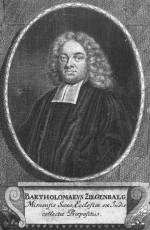 In the same period, a German missionaryBarthalomaus Ziegenbalg (1683-1719) also worked in Tamil Nadu and called himself ZiegenbalgIyer. This Protestant priest landed in Tranquebar (Tharangampaadi) in 1706 and worked with a Danish company which was the first to bring German printing machines to Tamil Nadu. He printed the first Tamil Bible (New Testament). He was the first to stoke anti-Brahmanism by creating a hatred for Brahmins among other communities.
In the same period, a German missionaryBarthalomaus Ziegenbalg (1683-1719) also worked in Tamil Nadu and called himself ZiegenbalgIyer. This Protestant priest landed in Tranquebar (Tharangampaadi) in 1706 and worked with a Danish company which was the first to bring German printing machines to Tamil Nadu. He printed the first Tamil Bible (New Testament). He was the first to stoke anti-Brahmanism by creating a hatred for Brahmins among other communities.
Next in the list of Christian priests who “served” the cause of Tamil was another ‘Iyer’ — G. U. Pope(1820-1907) or “Pope Iyer.” He translated a few Tamil literary works such as Thiruvaachakam, Thirukkural and Naaladiyaar, and said he could find the teachings of Apostle St. Paul and St. Francis of Assisi in SriMaanikkavaachakar’s Thiruvaach Akam.
Another missionary who inflicted massive damage on Tamil Hindus was the ScotRobert Caldwell (1814-1891) who, along with his wife Elissa Mault, resided in Tirunelvelli and made huge conversions. Though he did not indulge in Inculturation, he sowed the poisonous seed called Dravidian racism. He fully utilised the Aryan-Dravidian theories concocted by German linguist Max Muellerand imposed them on Tamil Hindus as true history. He abused the word ‘Dravida’ to the hilt and projected Tamil Hindus as a separate Dravidian race.
Nowhere in ancient Tamil literature does the word ‘Dravidian’ exist; there was a Christian agenda of dividing the native people behind Caldwell’s coining the term ‘Dravidian’. While the British Government used the Aryan-Dravidian theory to divide and rule the nation, the Church used it to conquer the languages and destroy the culture in order to Christianise the nation. (3)
 Christian-Dravidian Nexus
Christian-Dravidian Nexus
The Aryan-Dravidian Racist Theory propounded by the Christian Padres and the British Government came in handy for the stalwarts of Dravidian Movement to call for a separate Tamil Nation. For all Dravidian racist leaders like EVR, Annadurai and Karunanidhi, Robert Caldwell was (and is) a “God;” they utilized his Dravidian theories to the hilt calling for a separate Tamil Nation.
Make no mistake, “Tamil Separatism” is a Christian agenda and the Church has a long-term plan of forming a Tamil Christian Nation with Tamil Nadu and North and East Sri Lanka. With this objective, the Church supported the LTTE and its Tamil Eelam demand. Dravidian racist leaders’ chauvinistic campaign against “Aryan-Brahmins”, well supported by the Church, helped them to capture power in Tamil Nadu in 1967 and till date no nationalist party could dislodge them from the seat of power.
In the last 47 years of Dravidian rule, one can find a clear nexus between the Church and the ruling party. No wonder the Dravidian government glorified the above said Christian missionaries by installing statues for them along the Marina Beach! Whether it is fixing of Thiruvalluvar’s birth anniversary in the month of January, or shifting of Tamil New Year to January, or ‘secularising’ the Hindu festival of Pongal, one can always find a Christian push behind such Dravidian acts.
 Motivated lies on Thiruvalluvar and Thirukkural
Motivated lies on Thiruvalluvar and Thirukkural
G. U. Pope translated and published SageThiruvalluvar’s Thirukkural in 1886. There is an ancient folklore that Thiruvalluvar was friends with a naval captain by name Yelaela Singan and used to meet him often at the beaches of Mylapore. G.U. Pope relied on this story and the concoction thatThomas converted a large number of families in and around Mylapore. He then gave an introduction to his Thirukkural translation as follows:
“Thiruvalluvar worked hard to acquire knowledge by all means. Whenever a ship anchors in Mylapore coast, Valluvar’s ‘Captain’ friend would send him message about the arrival of new visitors including foreigners. Many foreigners could have travelled in his friend’s vessel and landed in Mylapore via Sri Lanka. Within me I see the picture of Thiruvalluvar talking with the Christians gathering information and knowledge. He has gathered a lot of Christian theories in general and the minute details of Alexandrian principles in particular and incorporated them in his Thirukkural. The philosophy of Christian theories from the Church situated near Valluvar’s place is present clearly in Thirukkural. Thiruvalluvar lived between 800 AD and 1000 AD. The Christian Biblical works were certainly an evidence for Valluvar’s Thirukkural. He was certainly inspired by the Bible.” (4)
This sordid introduction to his translated work shows G.U. Pope’s fanatic mindset and the ulterior motive behind his “love” for Tamil language and literature! –IndiaFacts, 6 January 2015
 Christian inculturation in Tamil Nadu blasphemes Thirukkural
Christian inculturation in Tamil Nadu blasphemes Thirukkural
Christians who had the temerity to lay their hands on Thirukkural then, attempted to baptise Thiruvalluvar recently. Taking a cue from G.U. Pope’s atrocious introduction to Thirukkural, a fanatical evangelist called Deivanayagam, supported by the Madras Catholic Diocese, has been on a relentless campaign that, “Thiruvalluvar was a disciple of St. Thomas and most of the teachings in Thirukkural have been either taken from Bible or from the preaching of St. Thomas.”
The Roman Catholic Dioceses of Kerala and Tamil Nadu had announced in 2008 that they would be producing a film on the life and times of St. Thomas, wherein they would depict Thiruvalluvar as a disciple of St. Thomas.
Later, as confirmation of the unholy Christian-Dravidian nexus, Tamil Nadu Chief Minister Karunanidhi graced the occasion of the said film’s inaugural function as Chief Guest. Though himself is an ‘expert’ on the Thirukkural, Karunanidhi chose to participate in the inauguration of a film falsely portraying Thiruvalluvar as a disciple of St. Thomas, a complete concoction and an audacious expression of extremist evangelism.
However, after Pope Benedict’s assertion that St. Thomas never visited South India, the film production was reportedly dropped. (5)
 “Thamizhar Samayam” (Religion of Tamils) or “Thoma Kiruththuvam” (Thomas Christianity)
“Thamizhar Samayam” (Religion of Tamils) or “Thoma Kiruththuvam” (Thomas Christianity)
Close on the heels of the above said inauguration function, Deivanayagam organized a four-day meet titled, “Thamizhar Samayam – Muthal Ulaka Maanaadu” (Tamil Religion – First World Conference), from August 14-17, 2008, under the aegis of Dravida Anmeega Iyakkam (Movement of Dravidian Spiritualism), a movement started by him to spread the canard called “Thomas Christianity”, in the name of “Adi Christhuvam” (Early Christianity). The event was backed by the Mylapore Archdiocese which hosted the event in its own premises in Santhome near Mylapore.
Here, the following blasphemous distortions were projected as researched facts:
- Adi Christhuvam (Early Christianity), promulgated and established in Tamil Nadu by St. Thomas, is the original religion of the Tamils.
- The Aryan invaders distorted Thomas Christianity and conceived new concepts called Shaivism and Vaishnavism and hence they must be treated as sub-sects of Thomas Christianity.
- The ‘holy trinity’ of ‘Father-Son-Holy Spirit’ is denoted by ‘Shiva-Muruga-Shakti’ and the same is also denoted by ‘Brahma-Vishnu-Rudra’
- The ‘holy trinity’ concept has beautified Indian Religions. The ‘Holy Spirit-Father’ combination can be identified with ‘Ardhanarisvarar’ and ‘Sankaranarayanar’ formations.
- St Thomas’s teachings abound in Thirukkural and Sage Thiruvalluvar was a disciple of St Thomas.
- The Hindu practice of applying sacred ash on the forehead actually started from Ash Wednesday the first day of the Penance (Lent-days). The sacred ash comprises within it all the three stages of Death, Resurrection & Pardon due to the fact that the ash cannot be destroyed, as the resurrected body cannot be destroyed.
- Thiruneetru Pathigam, a collection of Shaivite Hymns sung by SageThirugnaana Sambandhar comprises a number of messages of Christianity.
- All Shaivite literatures namely Thirumurai, Thevaram, Thiruvasagam andThirupathigam do not talk about the four Vedas namely Rig, Yajur,Sama and Atharva; as they carry the messages of Christ, the Bible is the only Veda.
Although this scheming evangelist was called for a debate by some scholars at Sri Dharmapuram Adheenam and his crackpot theories were demolished, he had the audacity to continue with it. (6)
Institutions of Inculturation
Inculturation, as a strategy, is planned well and executed meticulously through institutes which are exclusively created for the evil purpose. They operate in educational, social, spiritual and fine arts fields.
“Jnana-Deepa Vidyapeeth” may sound like a Hindu institution. But the fact remains that it is a Christian institution blatantly indulging in Inculturation. Attempting to give a Hindu colour to its emblem through Kathopanishad saying that the tree in the emblem denotes or represents asvatha and the meditating figure is seeking Brahma-vidya, the institution finally underlines that, all the components of the emblem merge at the summit in the cross of Christ which, as the linchpin of time and eternity, interlocks the human and the divine.
The institute says its mission is to foster an integral understanding of the human person which mediates the vision of Jesus for India.
Apart from such educational institutions, other institutions operate exclusively for Inculturation. The best example is “Shantivanam”. Dedicated to the “Holy Trinity” Shantivanam was founded in 1950 by two French priests Fr. Jules Monchanin, a diocesan missionary and Fr. Henry le Saux(Abhishiktananda) from the Abbey of Kergonam. They named it as Saccidananda Ashram, equating “Sath-Sith-Ananda” with the Holy Trinity. Later Fr.Bede Griffiths, who had come to India in 1955, took charge of Shantivanam in 1968 on the invitation of Fr. Henry le Saux, after short stints at Bangalore and Kurisumala in Kerala, where he changed his name as Dayananda wearing saffron robes. He made Shantivanam a center of Inculturation and inter-religious dialogue.
The Saccidananda Ashram inside Shantivanam has a temple inside. The entrance and the temple have been built in the form of Hindu architecture with sculptures of various Christian saints. One “Cosmic Cross” is also placed. The ashram spends a lot of time and money for “academic research” on inter-religious understandings and meeting points, encounters of Christianity and Hinduism, Christian Vedanta, and many other Inculturation and interfaith stuff. Even after the demise of Fr. Bede Griffiths, the institution continues its Inculturation works unabashedly. Jesuit Priests, whose mission is to destroy Hinduism to establish Christianity, visit here from abroad and some of them are very frequent, almost every year.
If Shantivanam is for “academic research”, yet another institution has been established exclusively for fine arts, by name Kalai Kaviri College of Fine Arts in Trichy. Having nationally accredited with Grade A by NAAC (National Assessment and Accreditation Council) and also recognized by the Government of Tamil Nadu, the institution has tasted success in Christianising the divine Hindu art of Bharatanatyam. Apart from Barathanatyam, it also focuses on instruments such as mridangam, veena and violin. The classical music and dance are being taught on Christian (Bible) Themes with the main objective of Christianising them.
The Church’s hold on Dravidian parties of Tamil Nadu is so much that this institute Kalai Kaviri is patronized by DMK as well as the AIADMK governments. While the DMK government allowed this institute to play a major role in Sangamam Festival organized between 2008 and 2011, the present AIADMK government allows it to play a major role not only in its Christmas celebrations but also festivals of temples like Srirangam Ranganathar Temple which was in the Chief Minister’s own electoral constituency until she was sentenced in accumulation of disproportionate assets case.
Such Inculturation institutes are there in foreign states too, where they operate with the aim of controlling their own youth who get fascinated by Hindu philosophies. One such institution is Atma Jyoti Ashram [now called Light of the Spirit Monastery]. This Atma Jyoti Ashram, which operates from New Mexico, is well-connected with Shantivanam, Trichy. (7)
 The Yoga Marketers as Corporate Gurus
The Yoga Marketers as Corporate Gurus
As if this is not enough, we have a few cults here in India itself, which do not want to identify themselves as Hindu. The globe-trotting Corporate Yoga Masters, who lead these cults, dress and make up themselves to look like Jesus, in order to sell their yoga globally. When one hears these Yoga Masters speaking, one could feel as though listening to Christian preachers.
The precedence for this was actually set byParamahamsa Yogananda, who established hisYogada Satsang Society’s International Headquarters in Mt. Washington in 1925. He legitimised the myth called Jesus by giving him a permanent place next to Bhagwan Krishna. (8)
When the Corporate Gurus open their doors for foreign followers without any kind of verification, to please them for their dollar donations, this kind of deliberate misinterpretation of our scriptures will certainly happen. Moreover, elements will infiltrate in the garb of “disciples” with a hidden agenda of immensely maligning and harming our Sanatana Dharma. The recent example was the huge damage caused by a long time disciple Gail Tredwell to Mata Amritanandamayi and her ashram. (9)
The Hindu yoga is marketed by Corporate Gurus who want to identify themselves as “secular” or “spiritual” but not “Hindu”; foreigners flow as ‘disciples’ with huge money too; ashrams are established worldwide; round the year globe-trotting; ultimately, knowingly or unknowingly they start selling Jesus themselves in India and help the cause of Inculturation leading to Christianisation of Yoga.

